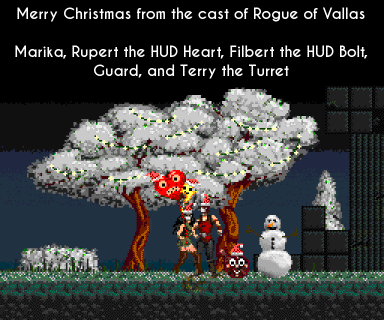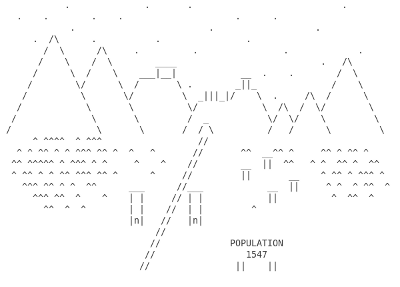A Word From the Developer
A Brief History of Idosra
Long-time members of the Stencyl developers community may recall a handful of games in the Vallas series dating back to 2013. The series began with a game meant to promote the soon-to-be-published An Ember in the Wind—an idea taken from how the game Nation States promoted Jennifer Government. This idea was soon abandoned. First, it wasn’t helping me finish the book. It also dawned on me that I never read Jennifer Government despite there being its associated game.
I hastily renamed the game to Vallas and brushed it aside. The protagonist was renamed Marika, a name borrowed from a character from a sample script in Jerome Stern’s Making Shapely Fiction. Vallas was a name randomly generated from the website Chaotic Shiny’s service.
From time to time, particularly when I needed a game world for a game jam game, I pulled Vallas out. It didn’t have a consistent story until my entry into Stencyl Jam 16: Temple of Idosra. This was the seed of an idea based on the imagined far future of North Carolina’s Outer Banks coast.
The COVID-19 Lockdown

Originally called Rogue of Vallas, the Idosra project began shortly after the COVID-19 lockdown started in March 2020. The project was meant to fill some free time and be a fun distraction. As the characters and their stories began to take shape, I decided it was finally time to give the world of Vallas a proper story.
Some of the events in the game are loosely based on U.S. elections in 2012, 2016, and 2020. Marika, like myself I suppose, isn’t too interested in regional politics—but knows she should be. None of the characters are meant to represent any particular U.S. candidate. However, much as in real life, the Vallan election is consuming everyone’s attention while something more sinister brews.
This game pushed my artistic and level design skills, but I don’t think anyone can argue learning something new isn’t a good thing. I thought of several different types of games to tell the Vallas story. I chose to write an action-adventure RPG because this type of game makes best use of my skillset as a programmer and mathematician. Action-based games require fast math, physics, and AI-handling routines. These are the types of programming problems I most enjoy solving. I also implemented my own flavor of the BASIC programming language to power NPC dialog sequences—so enjoy talking to the cast of characters!
Influences
The look and feel of Idosra is heavily inspired by the 90’s DOS games—particularly those from Apogee and Epic Megagames—that my brother and I regularly downloaded from the Houston area BBS HAL-PC. Jill of the Jungle and Prince of Persia were two significant influences. To a lesser extent, so was Executioners.
However, certain game mechanics—especially those where Marika needs to figure out how to infiltrate a Vallan compound—are inspired by the games my brother and I would make up while waiting the hour our 2400-baud modem took to download a single game. The escape room-like fort games were often more fun than whatever demo we ended up downloading. I like to think I captured that special combination of imagination and impatience.

Another significant influence were MUDs (Multi-User Dungeons). Although Idosra is a single-player experience, many mechanics of MUDs found their way into the game. The two most influential MUDs were Cardinal Syn and Realms of the Lost Dimension, both running the ACK!MUD codebase.
Enjoy!
Behind the Scenes
Idosra: The Electric Renaissance was developed using the Stencyl development environment, built on top of OpenFL using the Haxe programming language. About half of the code was “written” using Stencyl’s visual design blocks, and half using typed Haxe code.
The game implements a dialect of BASIC dubbed “VDS BASIC” (short for Vallas Dialog BASIC, named after its original purpose).
Most of the artwork was drawn using Aseprite, GIMP, and Krita. Eadweard Muybridge’s work was particularly helpful for animation studies.
All of the levels were created using the Tiled map editor.
All of the .tmx and .tsx Tiled files, .bas VDS BASIC program files, and other miscellaneous data files are exposed. All of the levels can be edited, or new ones patched into the map.
Of course, this means you can easily cheat. However, my general philosophy on computer games is that they are toys, both to enjoy and also learn from. I don’t feel like telling people how to enjoy the game. If anyone wants to pick the data files apart and see how they work, go for it.
Still—I would encourage you to at least try the game the way it was meant to be played first. Once you peek behind the curtain, the magic and mystery is gone and there is no undoing that.